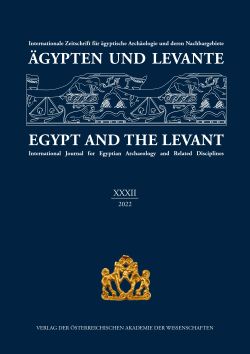
Ägypten und Levante 32, pp. 143-163, 2022/12/30
Internationale Zeitschrift für ägyptische Archäologie und deren Nachbargebiete
International Journal for Egyptian Archaeology and Related Disciplines
A Red Lustrous Wheel-made Ware, a ceramic product from the second half of the second millennium BC, has turned up in Late Bronze Age settlements and cemeteries in Anatolia, Syria, Palestine, Egypt, and Cyprus, with occasional specimens also found in the Aegean. Its places of origin and manufacture have not yet been conclusively determined, though they were almost certainly located around the north-eastern corner of the Mediterranean, with Cilicia being the most favoured candidate. The commonest type is the spindle bottle, of which a specimen in the Egypt Centre of Swansea University in Wales, exceptionally, has an Egyptian hieroglyphic inscription down one side of the body. The bottle has no provenance, but circumstantial evidence favours a findspot in Egypt, probably a tomb. Disappointingly, the inscription tells us nothing about the place the vessel was made at or its contents but indicates that the text was added much later than the bottle’s production.
Keywords: Red Lustrous Wheel-made Ware; Levant; Egypt; New Kingdom; hieroglyphic inscription; Egypt Centre, Swansea University